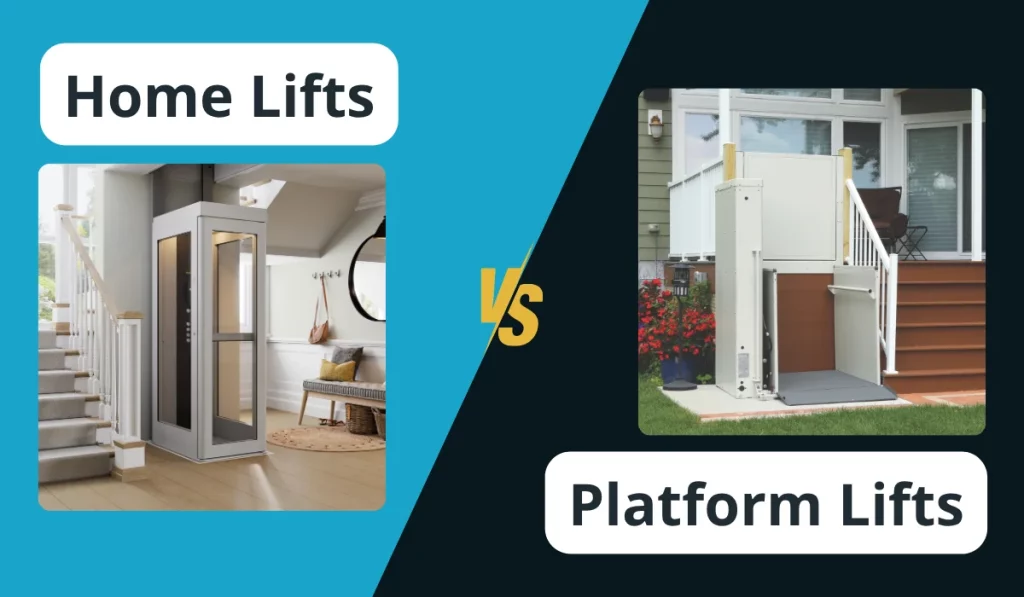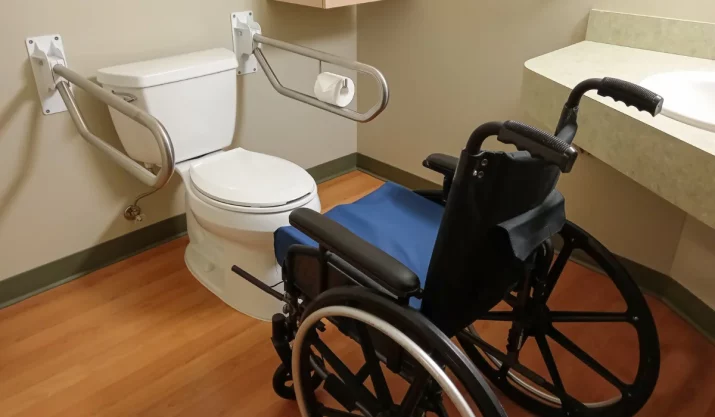The Difference Between Home Lifts and Platform Lifts

Table of Contents
If someone in your home has trouble getting up and down stairs, a lift can make life easier and safer. Two of the most common types of lifts are home lifts and platform lifts. They both help with mobility issues, but they work in different ways and fit different types of homes and needs.
In this guide, you’ll learn the key differences between home lifts and platform lifts. We’ll also walk you through how to decide which one is right for you or your loved ones.
Key Takeaways
- A home lift is a good choice if you need indoor access and don’t use a wheelchair or scooter.
- A platform lift helps wheelchair users travel short distances and works well for indoor and outdoor use.
- Your choice depends on who will use the lift, your home’s layout, your budget, and how long you’ll stay.
- California Mobility can help you pick the right lift for your space, needs, and home accessibility goals.
Home Lifts vs. Platform Lifts: Key Differences

Here’s a side-by-side look at how these two lift options compare in real-life situations. This can help homeowners understand what to expect before choosing one.
| Features | Home Lift (HL) | Platform Lift (VPL) |
|---|---|---|
| Main Function | Helps people move between floors inside the house | Helps wheelchair users move a short distance vertically |
| Type of Lift | Usually, an enclosed cab, like a small residential elevator | Open platform, sometimes called a wheelchair lift or VPL |
| Best For | People who have trouble using stairs but don’t use a wheelchair | Wheelchair users, or those using scooters and mobility devices |
| Location | Indoors only | Works indoors or for outdoor use, like garages and porches |
| Safety Features | Emergency buttons, enclosed cab, auto stop | ADA controls, non-slip surface, safety gate |
How to Decide Which Lift Is Right for Your Home
Choosing the right lift for your home starts with understanding your day-to-day needs. Here’s how to break that down step by step:
Start With Your Specific Needs
Think about who will use the lift and why.
If your loved one uses a wheelchair or scooter, a vertical platform lift or incline platform lift is usually the better option. These lifts are designed to carry mobility devices and follow ADA rules for safe use.
If the person doesn’t use a wheelchair but can’t walk up stairs, a home lift or residential elevator is a better fit. These lifts are like chair lifts, but they move you safely between floors while standing or sitting.
Look At Your Home’s Layout
Some California homes don’t have much space to work with.
Installing a home lift usually means adding an elevator shaft and room for doors and possibly a machine room. That works well in new construction or during a big remodel.
Platform lifts are easier to install in an existing home where structural modifications are challenging. For example, porch lifts can be added next to a front step or garage without major changes.
Some indoor VPLs can go beside a stairway to provide access to the next floor.
Think About Your Budget and Timeline
Home lifts are a long-term investment.
They improve home accessibility and quality of life, but take time to install. They also cost more because of the materials, permits, and building work involved.
Platform lifts are more cost-effective.
If you need a quick solution, say, someone is coming home from the hospital, VPLs are faster to install and still meet high safety standards. Some families use them while they decide on bigger changes later.
Consider How It Will Look and Feel
A home lift offers more design options.
You can pick materials that match your home’s décor, and they fit right into your living space. They feel more like a part of your house and work well for aging in place.
Platform lifts are more about function than looks.
But newer models do have cleaner designs and safety features that work well both indoors and outdoors.
Think About How Long You’ll Stay in Your Home
If you plan to stay in your home for many years, a residential elevator or home lift may be worth it. It gives you access to all levels of the house and supports your needs as they change.
If you’re unsure how long you’ll stay, or if you need something fast, a VPL is a better option. It gives you the accessibility you need now, without the wait or a big construction project.
Not Sure What Kind of Lift Your Home Needs?
You don’t have to figure it out on your own.
At California Mobility, we help homeowners all over the state choose the right accessibility solution for their space. Whether you’re retrofitting an existing home or building from the ground up, we’ll help you sort through your options.
We look at your space requirements, weight capacity needs, mobility devices, and long-term goals. Whether it’s stairlifts, home elevators, or a vertical platform lift, we’ll recommend the type of lift that works best for your layout and your loved one’s safety.
Want help figuring out what’s possible in your home?






